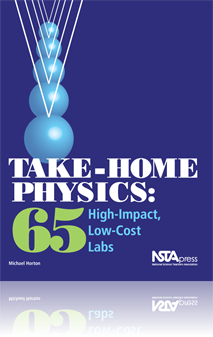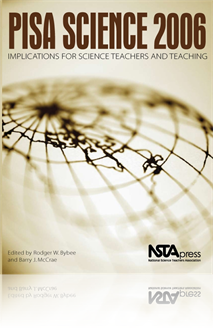All Book Chapters
Book Chapter
It is important for students to understand how resistors, capacitors, and batteries combine in series and parallel. The combination of batteries has a lot of practical applications in science competitions. This lab also reinforces how to use a voltme...
Book Chapter
This lab is not an inquiry activity. There are some students whose reaction times will not allow them to catch a 12 inch ruler. They may use a dowel, stick, strip of cardboard, etc. Although the students are led to believe that the point of the lab i...
Book Chapter
This lab is an inquiry activity in that students have not been exposed to the idea of terminal velocity, though they are using skills that they already have to analyze the balloon’s motion. The lab is both a review of graphing and translating dista...
Book Chapter
This inquiry activity is used after students have learned how to calculate kinetic and potential energy but before they learn about conservation of energy. It is important for students to repeat the measurement three times because it is not easy to m...
Book Chapter
PISA: An Introduction and Overview
For most science teachers, the term PISA evokes images of a leaning tower in an Italian city, but PISA also is an acronym for a major international assessment of students. In 2006, the primary assessment domain of PISA was science. This chapter provi...
Book Chapter
This simple but engaging activity about texture is for students in grades K–4. Textures are all around us, and they are important to our everyday activities—consider a piece of sandpaper, a cheese grater, or the soles of your shoes. As students b...
Book Chapter
Investigating the Properties of Magnets
In this activity, younger students encounter, discuss, and apply the basic characteristics of magnets and magnetism as they explore and elaborate on their experiences. Student groups implement some of the terminology and concepts appropriate to the s...
Book Chapter
Applying Simple Chromatography
This activity involves chemistry, mystery, colors, and measurement. Students observe the composition of various inks by separating them via water-based chromatography. Students use what they learn about chromatography to solve a mystery involving a s...
Book Chapter
Investigating Surface Tension and Soap
You students encounter soap and water every day and the activity in this chapter helps them learn something new about both substances. Students find out why water can actually overfill a cup without spilling and why soap makes dust or dirt particles ...
Book Chapter
Learning About Acids and Bases
The chemistry of acids and bases is a fundamental area of study in the physical sciences. The following activity is really two exercises in one. First, students learn to distinguish between acids and bases using various color-changing indicator solut...
Book Chapter
For this Earth science investigation, students examine the composition of soil samples taken from three different depths at the same location. Students answer questions such as “How do the three samples compare? How does the soil feel? Look? Smell?...
Book Chapter
In this activity, students examine garden variety rocks, classifying them based on observable properties. This lesson teaches students not only about rocks but also about how to take a closer look at objects and materials that they encounter every da...
Book Chapter
Students learn what evaporation is and how various factors—time, heat, surface area, and wind—affect it. They also discover that water does not always evaporate at the same rate and saltwater leaves something behind when it evaporates. Finally, s...
Book Chapter
Examining Colors, Color Perception, and Sight
Students of all ages are fascinated by color and how we perceive it. For the main activity in this chapter, your class explores colors and visual perception by mixing colors in several ways. Students learn more about colors, light, vision, and color ...
Book Chapter
Exploring the Mysteries of Fingerprints
This activity combines a variety of processes and skills into an investigation of something near and dear to your students—their fingers. Math and science blend seamlessly as students observe, compare, and apply their ideas about fingerprints....




.jpg)